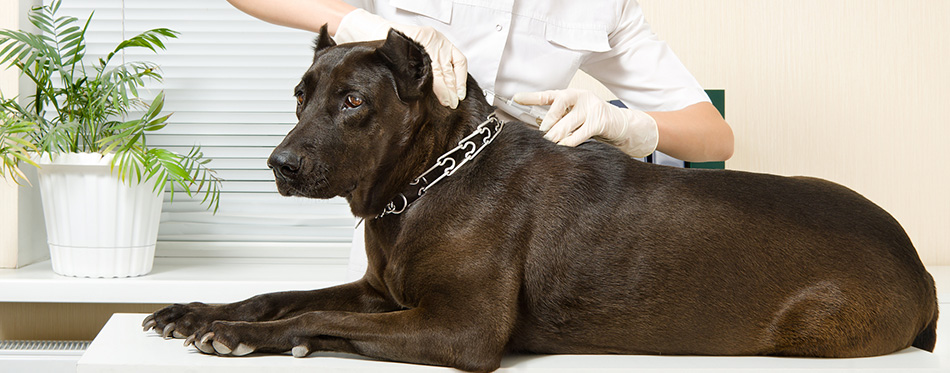While the traditional collar tags are still in use, most people prefer to use microchip implants to ensure their dog’s safe return whenever they go missing. At least eight million pets find themselves in shelters on a yearly basis and only a few are reclaimed, probably because there was no way for the owners to know their location after getting separated from them or whoever found them didn’t have any means to contact the owner. To resolve the issue of not being able to find your pet once it becomes a stray, experts came up with these microchips that are so tiny but provide the necessary information that would lead to the recovery of your pet.
Considering all the technology that seems to surround it, people often wonder how much it will cost to get a dog microchipped. Before we get into all that, just note that a microchip dog cost is nothing compared to the peace of mind it brings to the dog owner. You can sleep well at night knowing that your dog’s safety is guaranteed. Beyond placing the object in a pet, there are other things to take note of if you are going to get your dog microchipped. So, what exactly is this microchip dog, how does it work and how much does it cost to microchip a dog? We explore the facts to make it easier for you.

What is Microchipping and How Does it Work?
Microchipping is a simple procedure that involves a tiny chip being positioned under your pet’s skin, preferably between the shoulder blades (where they have loose skin) through the help of a needle. The microchip comes preloaded in a sterile applicator and within a few seconds, the process can be completed without using anesthesia. However, preparing the paperwork might take more time to complete.
As often misconstrued, a microchip is not a GPS that tells the location of your dog at any point in time. Instead, it’s a radio-frequency identification (RFID) implant which gives your dog a permanent ID. This implant does not make use of a battery, thus, the lifespan has no limit and does not need to be replaced over time. A microchip electronically stores the information needed to identify your dog and this includes your contact information that you will provide during the registration process.
Basically, reuniting with your lost dog starts with someone finding them and taking them to an animal shelter where they are expected to scan the dog for microchips. Each microchip has a unique ID number which can be read by a microchip scanner. Once the scanner reads the chip’s number, the task of finding the owner is then pushed to the company that made the chip. The number is then used to extract the contact details of the pet owner. Even though most pets wear collar tags with the owner’s information on them, microchips are more reliable in the sense that they can’t fall off or be removed like the tags and can be read anytime and anywhere. Find out more about dog ID tags here.
In view of this, it becomes important to inform the national pet recovery database about any changes made in your contact information. If for any reason you change your phone number, it is important to update the information on your dog’s microchip as that is the only way it remains relevant and in case you are wondering, you don’t need to extract the microchip in order to update the information. The ID number is all you need to access the data and make the necessary changes.
Is a Microchip Harmful To The Pet?
It doesn’t hurt more than a vaccine shot and doesn’t need the services of a veterinarian to put the implant in place. It is, however, advisable to have it done at a vet office to avert complications that might occur if the procedure is not done correctly. In such cases which are very rare, the animal might suffer fatal damage to the system. On rare occasions, some animals can develop tumors around the spot where the microchip was placed. This is not a common issue among the millions of animals with microchip implants and should not be a matter of concern when the procedure is carried out by a professional.
How Much Does it Cost to Microchip a Dog
The good this is, you only get to do it once, even though it doesn’t cost that much. The cost to get a dog microchipped is totally worth it if you love your pet so dearly and wouldn’t want to be separated from them. But, how much does it cost to microchip your dog? If you get it implanted at a veterinary office, the cost to get a dog microchipped can go as high as $45.00 to $50.00. However, if the implant is placed during a regular check-up at the vet office, it might not be that expensive.
There is also the option of going to the local animal shelters, pet shops or rescue groups where you can either enjoy the services at no extra cost or get it done at a very cheap rate It basically depends on the type of microchip your pet needs and where you are getting it implanted but for the most part, it only costs with a range of $25.00 to $50.00.
Getting the microchip implanted in your dog is just one part of the process and it is reduced to nothing if the registration is not properly carried out. To register the microchip might cost you a little bit more, depending on where you had the implant done. Some outlets charge you extra to register the chip with your contact information and this should be less than $20.00. On the other hand, the fee for registering the chip might be included in what you paid to have it implanted.
Once implanted and registered, the microchip dog lasts through the pet’s lifetime and there will be no need to get it done again or even fix it since it’s not expected to be broken.
Best Microchip for Your Dog
Talk to the animal shelter officials or vet in your area to be sure of the one that will work best for your pet. Apparently, many companies are in the business of producing these chips and some scanners are selective in reading them. This simply means that the chip you implant in your dog might not be readable with the scanners used by the shelter in your area and this is a problem.
Also, some chips are not seen when an incompatible scanner is used to search for it and not all shelters have the universal scanner that is expected to dictate all chips. Nevertheless, the person doing the scanning needs to take extra measures as these chips often migrate and you might be scanning for it where you feel it’s supposed to be but in the actual sense, it has shifted to another spot. In all, to avoid a situation where the microchip in your dog cannot be dictated, you need to consult the necessary authorities in the field to know which microchip works best in your area.

What Animals Can Be Microchipped?
Even though dogs have the highest number of microchips implanted, other animals can also get the same treatment. The procedure can be done on most animals including horses, ferrets, cats and other mammals. A lot of cats and dogs have found their ways back to their original owners, thanks to the modern technology that is the microchip.
Important Facts To Note
You still need collar tags on your pets even after implanting the microchips as not everybody knows that they need to scan for microchips when a pet is rescued. Considering the fact that microchips are a bit more advanced in technology, a lot of people are yet to get the hang of it, thus, it is important to take other steps to ensure the safety of your pet. The only information deemed necessary to appear on the tags is your phone number and not your address. The pet rescuer should know what to do with the number when the situation calls for it. For cats, the collar tag should be placed in a way that it doesn’t get entangled when the animal is climbing or exploring the wild. For more options, check out our detailed review of dog collars.
Furthermore, if you travel to another country with your pet, it is likely that the requirements for the chips will change. In Europe, chips operate on 134.2 kilohertz while the United States uses 125 and 128 kilohertz chips. Some companies in the US have also started implanting chips with the European frequency which means some scanners in the country can now pick up the frequency easily.
For the most part, be sure that the shelters around you have scanners that can read the chip you have implanted and above all, if you change your address or phone number, remember to update your contact information with the pet recovery database to make the process of recovering your pet a lot easier.
Source:
- Microchipping Your Dog – Blue Cross

